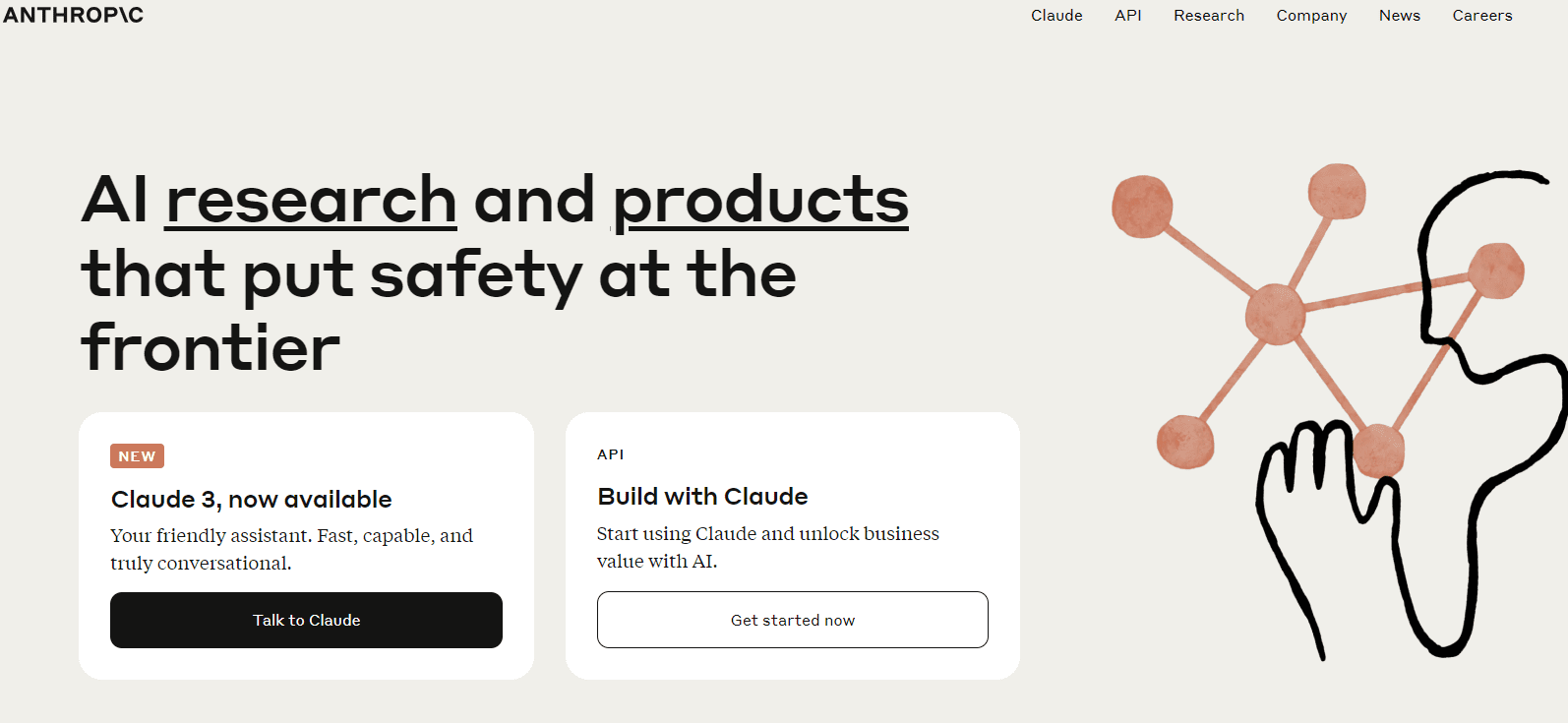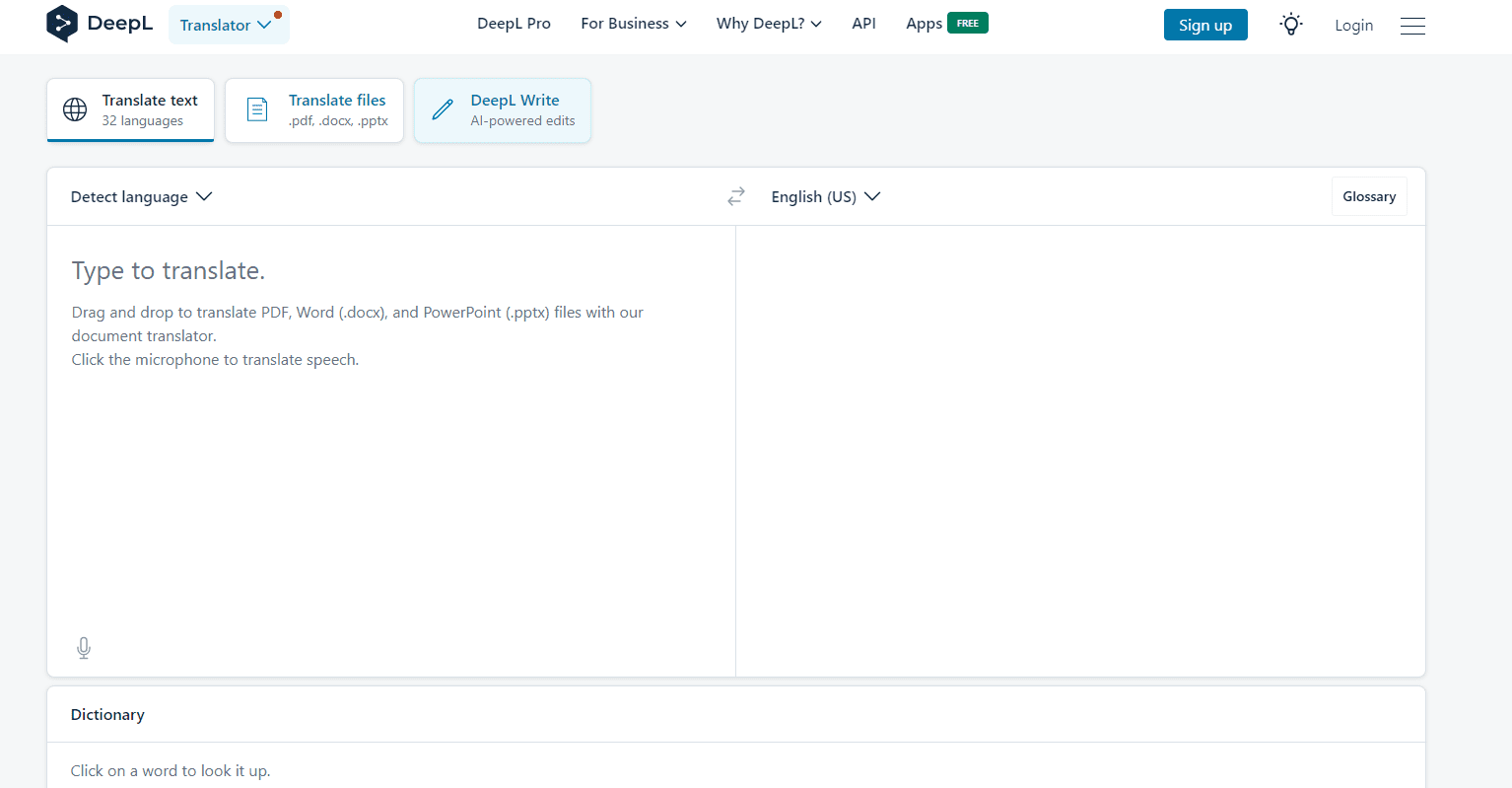The world of Artificial Intelligence is teeming with innovation, and these companies are all making significant contributions.
Stability AI (2020): Democratizing AI Image Creation
Stable Diffusion: This open-source text-to-image AI model allows users to generate high-quality images from simple text descriptions.
DreamStudio: This cloud-based platform leverages Stable Diffusion, offering a user-friendly interface for creating images without needing technical expertise.
- Focus: Stability AI champions accessibility. They contribute to the open-source community by releasing Stable Diffusion for anyone to use, while also offering a commercial option with DreamStudio.
- Impact: By empowering users to create images with just text prompts, Stability AI fosters creativity in various fields. Designers can generate mockups, marketers can create eye-catching visuals, and anyone can tap into their artistic side.

NVIDIA (1993): The Powerhouse of AI Processing
GeForce RTX GPUs: Designed for gamers with bleeding-edge graphics capabilities, these GPUs are also powerful tools for AI workloads thanks to their parallel processing architecture.
Tesla AI accelerators: These specialized processors are specifically built for AI training and inference, offering unmatched performance for complex models.
- Focus: NVIDIA is all about developing high-performance hardware optimized for AI tasks. Their GPUs provide the parallel processing power needed to efficiently train massive AI models, which is essential for advancements in the field.
- Impact: NVIDIA’s GPUs are the workhorses behind much of modern AI research and development. Faster training times with these powerful processors allow researchers to tackle ever-more intricate AI problems, pushing the boundaries of what’s possible.

Anthropic (2020): Steering AI Towards Safe Development
Safe AGI Alignment: This critical area focuses on ensuring that future Artificial General Intelligence (AGI) aligns with human values and goals.
Interpretable Decision-Making: Anthropic investigates ways to make AI systems’ decision-making processes more transparent and understandable.
Potential Risks of Advanced AI: They actively research and discuss the potential risks associated with highly advanced AI systems.
- Focus: Anthropic prioritizes the responsible development of AGI. Their research aims to mitigate potential risks and build trust in AI by ensuring it aligns with human values and avoids existential threats. They achieve this through research publications and advocacy for safe AI development practices.
- Impact: Anthropic’s research plays a vital role in building trust and mitigating risks associated with powerful AI. Their work contributes to a future where AI can be harnessed for good without posing a danger to humanity.

Microsoft (1975): Democratizing AI for Businesses
Azure Cognitive Services: This suite offers pre-built AI functionalities like facial recognition, sentiment analysis, and text translation, allowing developers to easily integrate AI into their applications.
Azure Machine Learning: This cloud-based platform simplifies the process of training and deploying custom AI models, making AI development more accessible for businesses of all sizes.
- Focus: Microsoft aims to make AI accessible to a broad audience. Their Azure platform provides a comprehensive set of tools for developers and businesses to build, train, and deploy AI solutions across various industries.
- Impact: With Microsoft Azure, businesses don’t need to be AI experts to leverage its benefits. Azure empowers companies to innovate in their fields by offering tools for tasks like automating workflows, gaining insights from data, and personalizing customer experiences.

OpenAI (2015): Pushing the Boundaries of AI Capabilities
GPT-3: This large language model is a powerhouse for natural language processing, capable of generating human-quality text, translating languages, writing different kinds of creative content, and answering your questions in an informative way.
Codex: This tool uses AI to generate code, assisting programmers by automatically completing code based on their instructions.
Jurassic-1 Jumbo: This is another text-to-image model from OpenAI, competing with Stability AI’s offerings.
- Focus: OpenAI is dedicated to researching and developing safe and beneficial AI. They push the boundaries of large language models like GPT-3 and explore other AI capabilities like code generation with Codex. Additionally, they make some of their tools available for public use.
- Impact: OpenAI’s advancements in natural language processing and code generation have significant implications for various fields. Their research fuels progress in applications like chatbots, virtual assistants, and even creative writing tools.

Grammarly (2009): Enhancing Written Communication
Grammarly browser extension: This integrates seamlessly with your web browser, providing real-time grammar, spelling, and style suggestions as you write.
Grammarly keyboard: This mobile app offers similar functionality for your smartphone or tablet.
Grammarly for Business: This caters to businesses by offering advanced features like team style guides and plagiarism checkers.
- Focus: Grammarly is all about improving written communication. Their tools help users eliminate grammatical errors, enhance clarity, and refine their writing style.
- Impact: Grammarly empowers users to communicate more effectively by ensuring their writing is clear, concise, and free of errors. This is beneficial for individuals and businesses alike.

IBM (1911): A Legacy of Enterprise AI Solutions
Watson Assistant: This platform allows businesses to build chatbots that can interact with users through text or voice.
Watson Knowledge Studio: This tool simplifies the process of building and training AI models, even for those without extensive AI expertise.
Watson OpenScale: This platform helps businesses manage AI fairness and bias by detecting and mitigating potential biases in their AI models.
- Focus: IBM’s Watson platform offers a wide range of AI solutions for enterprises. They cater to various industries like healthcare, finance, and manufacturing, helping businesses automate processes, extract insights from data, and personalize customer experiences.
- Impact: Through the Watson platform, IBM empowers businesses to leverage AI for a variety of tasks. This not only improves efficiency and productivity but also allows companies to gain valuable insights from their data and personalize their offerings for customers.

Amazon (1994): AI as a Cloud Service
Amazon Rekognition: This service analyzes images and videos, identifying objects, scenes, and even people’s faces.
Amazon Transcribe: This service converts speech to text, useful for tasks like transcribing meetings or generating captions for videos.
Amazon Comprehend: This suite offers natural language processing functionalities like sentiment analysis, entity recognition, and topic modeling.
- Focus: Amazon Web Services (AWS) provides a cloud-based infrastructure for businesses to build, train, and deploy AI models. Additionally, AWS offers a set of pre-built AI services like Rekognition, Transcribe, and Comprehend, making it easy for developers to integrate AI into their applications without needing to build everything from scratch.
- Impact: By offering a scalable and cost-effective platform for AI development, AWS makes AI experimentation and integration more accessible for businesses. This empowers companies of all sizes to leverage AI for tasks like automating workflows, analyzing customer data, and developing intelligent applications.

C3.ai (2009): Industry-Specific Enterprise AI Solutions
- Products: C3.ai Suite: This suite offers a variety of pre-built AI applications designed for specific industries. Examples include applications for predictive maintenance (anticipating equipment failures), fraud detection (identifying suspicious financial activity), and supply chain optimization (improving efficiency and reducing costs).
- Focus: C3.ai bridges the gap between complex data and actionable business insights. They develop and deploy enterprise AI applications tailored to various industries, helping organizations translate their data into practical benefits.
- Impact: C3.ai empowers businesses to make data-driven decisions that improve efficiency, reduce costs, and optimize operations. Their industry-specific solutions cater to specific needs and pain points within different sectors.

Google (1998): A Leader in Fundamental AI Research
TensorFlow: This open-source machine learning framework is a popular tool for building and training AI models.
Google AI Platform: This suite provides cloud-based tools for various AI tasks, including data storage, model training, and deployment.
TensorFlow Lite: This framework allows developers to deploy machine learning models on mobile and embedded devices.
- Focus: Google AI is a powerhouse in fundamental AI research, making significant contributions to areas like natural language processing, computer vision, and reinforcement learning. They also offer various tools and platforms to empower developers in the field.
- Impact: Google AI advancements play a crucial role in the overall progress of AI research. Their open-source tools like TensorFlow and developer platforms like Google AI Platform democratize access to AI development, fostering innovation across various fields.

Alphabet (2015): The Umbrella for Diverse AI Ventures
- Companies: Alphabet serves as the parent company for various AI-focused subsidiaries like:
Google (as discussed above)
DeepMind (focuses on developing Artificial General Intelligence)
Waymo (pioneering self-driving car technology)
Wing (developing drone delivery solutions)
- Focus: Alphabet acts as the overarching entity for Google and its subsidiaries involved in AI research and development. This allows them to pursue a diverse range of AI projects under one roof.
- Impact: Alphabet’s investment in various AI ventures fosters innovation across multiple sectors. Their work with DeepMind pushes the boundaries of general intelligence, while Waymo’s self-driving cars and Wing’s drone delivery projects explore the practical applications of AI in transportation and logistics.

Databricks (2013): Large-Scale Data Processing for AI
Databricks Lakehouse Platform: This cloud-based platform unifies data warehousing and data engineering functionalities, allowing for centralized data management and manipulation.
Databricks Machine Learning: This suite offers tools specifically designed for building, training, and deploying machine learning models at scale.
- Focus: Databricks centers around the Apache Spark framework, providing a powerful platform for large-scale data processing and AI workloads. This is crucial for handling the massive datasets required to train complex AI models and extract valuable insights.
- Impact: By enabling efficient processing of vast amounts of data, Databricks empowers companies to leverage AI effectively. Their platform facilitates the development of complex AI models that can uncover hidden patterns and insights within large datasets.

Dataiku (2013): Collaborative Platform for Data Science Teams
- Products: Dataiku Data Science Platform: This platform offers a collaborative environment specifically designed for data science projects. Data scientists, analysts, and business users can work together seamlessly on various stages of the machine learning workflow, from data preparation to model deployment.
- Focus: Dataiku streamlines the machine learning process by providing a user-friendly platform that fosters collaboration between different teams involved in AI projects. This allows data scientists, analysts, and even non-technical business users to work together effectively.
- Impact: Dataiku makes data science and machine learning more accessible by offering a collaborative environment. This breaks down silos between teams and accelerates the development and deployment of AI solutions within organizations.

DeepL (2017): Raising the Bar for Machine Translation
- Products: DeepL Translate: This machine translation service focuses on delivering high-quality and nuanced translations across various languages. DeepL is known for its accuracy in capturing the subtleties and context of human language.
- Focus: DeepL is dedicated to pushing the boundaries of machine translation. Their service goes beyond simple word-for-word translations, aiming to deliver natural-sounding and accurate translations that preserve the intended meaning.
- Impact: DeepL breaks down language barriers and fosters better communication by providing more accurate and human-quality translations. This can be beneficial for various applications, from document translation to real-time conversations.

Hugging Face (2016): Open-Source Hub for NLP Innovation
Transformers library: This open-source library provides pre-trained models and tools specifically designed for natural language processing (NLP) tasks. Developers can leverage these tools to build various NLP applications like chatbots, sentiment analysis, and machine translation.
Hugging Face Hub: This serves as a repository for sharing and deploying machine learning models, fostering collaboration among developers in the NLP field.
- Focus: Hugging Face champions open-source innovation in NLP. They offer the Transformers library with pre-trained models, making it easier for developers to build NLP applications without starting from scratch. Additionally, the Hugging Face Hub fosters collaboration by allowing developers to share and deploy their models.
- Impact: Hugging Face accelerates advancements in NLP by democratizing access to powerful tools and promoting collaboration within the developer community. This fuels innovation in various NLP applications.

Inflection AI (2016): Demystifying AI with Explainable AI (XAI)
- Products: Blackbox Explainable AI platform: This suite of tools helps users understand how AI models arrive at their decisions. By making AI models more transparent and interpretable, Inflection AI contributes to Explainable AI (XAI).
- Focus: Inflection AI prioritizes responsible AI development by focusing on Explainable AI. Their Blackbox platform allows users to gain insights into the decision-making process of AI models, fostering trust and mitigating risks associated with opaque AI systems.
- Impact: Inflection AI plays a vital role in building trust in AI by making these complex systems less like black boxes. Their XAI tools help users understand how models function and make informed decisions based on AI outputs.

Oracle (1975): Cloud Solutions for Enterprise AI
Oracle Cloud Infrastructure Data Science (OCIDS): This cloud platform provides a scalable environment for building, training, and deploying AI models.
Oracle AI: This suite offers pre-built AI functionalities for various tasks like natural language processing and computer vision, allowing businesses to integrate AI capabilities without extensive custom development.
- Focus: Oracle Cloud Infrastructure (OCI) offers a robust cloud platform for AI development, catering to the needs of enterprises. Additionally, Oracle AI provides pre-built functionalities, making it easier for businesses to leverage AI capabilities in their operations.
- Impact: OCI provides an alternative cloud platform for businesses looking to build and deploy AI models. Oracle AI’s suite of pre-built functionalities simplifies AI integration for various enterprise applications.

Jasper (2020): Boosting Content Creation with AI
- Key Focus: Jasper specializes in AI-powered content creation tools. Their platform assists users in generating various content formats, including:
Marketing copy (e.g., ad copy, website content)
Social media posts
Blog posts and articles
Other creative text formats
- Impact: Jasper streamlines content creation by automating tasks and offering suggestions. This allows businesses to:
- Improve efficiency by generating content more quickly.
- Focus on strategic aspects like content planning and refinement.
- Explore creative ideas and overcome writer’s block.

Meta (formerly Facebook) (2004): AI Powering Social Media and Beyond
PyTorch: This open-source machine learning framework allows developers to build and train AI models. It’s a popular choice in various fields of AI research.
Facebook AI Research: This division focuses on fundamental AI research, with publications and advancements in areas like computer vision, natural language processing, and robotics. Their research fuels AI applications across Meta’s platforms.
Reality Labs: This division spearheads Meta’s ventures into the metaverse, a concept of immersive virtual worlds. They’re developing technologies for users to interact with these virtual spaces.
- Focus: Meta leverages AI across its social media platforms (Facebook, Instagram, etc.) for various purposes:
- Content moderation: Identifying and filtering inappropriate content.
- Personalized recommendations: Tailoring content suggestions to user preferences.
- Automated advertising: Optimizing ad delivery based on user data.
- Impact: Meta’s AI research has a significant influence on how users interact with social media platforms. Their advancements in areas like personalization and recommendation algorithms can significantly impact user experience by delivering content relevant to their interests. Additionally, their work on the metaverse has the potential to revolutionize how we interact with technology and information in the future.

Rask AI (2018): Building Smarter Chatbots with Conversational AI
- Products: Rask Conversational AI platform: This platform offers tools and functionalities specifically designed for developing intelligent chatbots. These chatbots can understand and respond to user queries in natural language, mimicking human conversation.
- Focus: Rask AI empowers businesses to build chatbots for various applications, including:
- Customer service interactions: Providing automated support and answering user questions.
- Product recommendations: Guiding users towards relevant products based on their needs.
- Lead generation and qualification: Engaging potential customers and collecting information.
- Impact: Rask AI helps businesses automate customer service interactions, improve response times, and personalize user experiences. Their conversational AI platform allows businesses to leverage chatbots for various tasks, freeing up human resources and potentially improving customer satisfaction.

Cohere (2019): Democratizing Creative AI Tools
- Products: Cohere caters to both developers and enterprises with AI solutions:
Cohere for Developers: This suite offers tools for various creative tasks like writing different content formats, translating languages, and even generating code.
Cohere for Enterprises: Businesses can leverage Cohere’s expertise to build custom AI solutions tailored to their specific needs.
- Focus: Cohere specializes in large language models, providing AI tools that can handle diverse creative tasks. They offer pre-built solutions for developers and cater to enterprises with custom development options.
- Impact: Cohere empowers users to automate workflows and generate creative content across various fields. This can improve efficiency and productivity for tasks like marketing content creation, software development, and writing.
































